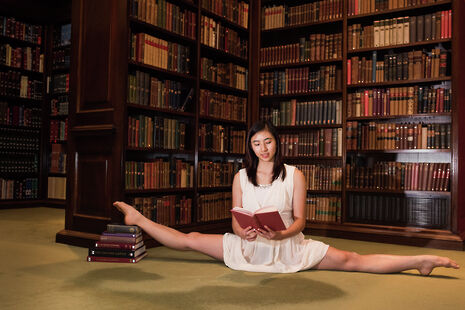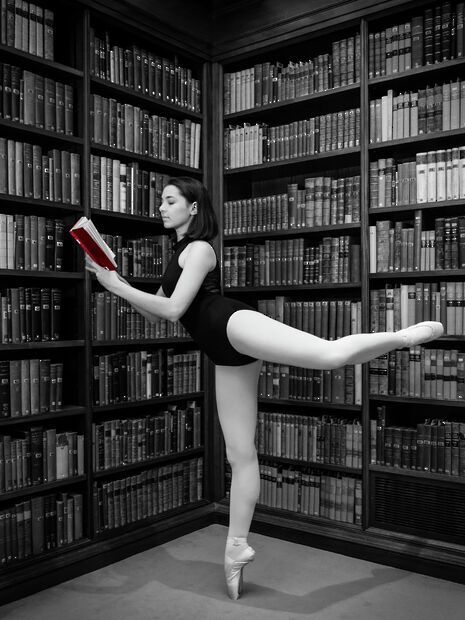Review: Poetry in Motion
Sophie Marie Niang reviews the Cambridge University Dance Society’s annual variety show at the ADC.

Poetry in Motion was a much more than just a dance show. It combined literature and dance in a way that made each form of art shine. The reader, Henry Eaton-Mercer, really succeeded in conveying the spirit of each piece of poetry in the show, whilst the enthusiasm and energy of the dancers made the whole evening a very enjoyable experience.
The show was undoubtedly an ambitious production: with 92 dancers involved, and over a dozen different styles of dancing, its eclecticism could have been detrimental to its cohesion, but Frances Myatt, the director, managed to avoid this pitfall by incorporating spoken transitions between each dance piece. Though at first I thought that these spoken parts interrupted the flow of the show, they proved to be a precious unifying thread.
The set was quite simple, as was the use of lighting, but they complemented the dances without ever overpowering them. The changes in colour in the lighting mirrored the atmosphere of each danced piece: a dark green evoking the jungle in ‘Wild Things’, the choreography inspired by Where the Wild Things Are by Maurice Sendak and performed by the Cambridge University Pole Society, and different shades of blue and red reflecting the particular energy and atmosphere of each choreography.

Overall, the quality of the choreographies and their executions was truly impressive. It seemed to me that a couple of pieces did not match the overall level of the show, but compared to how impressive others were, they did not alter the general experience at all. I was particularly impressed by ‘What If I Fall?’ an acrobalance piece inspired by the work of Erin Hanson, an Australian poet. The dance and the poem complemented each other perfectly and the quality of Janet Scott’s choreography and of the performance given by the dancers was outstanding. The powerful moves and the amount of trust and connection that I could feel between the dancers amazed me. This performance gave me the chills, and I could hear other members of the audience holding their breath as the performers leaped through the air.
Certain pieces were also really inventive, for instance ‘El Conde’, the second piece of the second act, which fused flamenco, work by an African-American ‘Word Artist’ and ‘One O’Clock Jump’, a cheerful musical piece from the golden jazz era, in a surprising choreography. Who would have thought that jazz and castanets were a match made in heaven?
“I could hear other members of the audience holding their breath as the performers leaped through the air.”
The way in which humor was incorporated into the show was also done in a very successful manner, without ever becoming grotesque. The baton-twirling choreography performed by Desirè Arancio was perhaps the most unexpected, and yet it was one of my favourites, as she successfully combined grace and playfulness, while executing complex dance moves.
Ultimately, what made Poetry in Motion stand out in my opinion was its ability to showcase so many different aspects of dance. Pieces were alternately moving, elegant, funny, fierce and playful, and I feel like anybody could find a part of this show that spoke to them, or moved them in one way or another. This eclecticism is also what made the show seem slightly messy at times, and the aim to make spoken poetry an integral part of the evening, though it at times worked beautifully with the music and the dance, still did break the flow of choreographies a little at some points. But, overall, I think that the diversity of styles and dance (and of the dancers themselves), as well as the sheer quality of most of the pieces made for a very successful show. I would definitely recommend it, especially if you’re someone who doesn’t think they particularly like dance and/or poetry: this ingenious combination of both might surprise you
 Interviews / ‘People just walk away’: the sense of exclusion felt by foundation year students19 April 2024
Interviews / ‘People just walk away’: the sense of exclusion felt by foundation year students19 April 2024 News / Copycat don caught again19 April 2024
News / Copycat don caught again19 April 2024 News / John’s spent over 17 times more on chapel choir than axed St John’s Voices22 April 2024
News / John’s spent over 17 times more on chapel choir than axed St John’s Voices22 April 2024 News / Climate activists smash windows of Cambridge Energy Institute22 April 2024
News / Climate activists smash windows of Cambridge Energy Institute22 April 2024 Theatre / The closest Cambridge comes to a Drama degree 19 April 2024
Theatre / The closest Cambridge comes to a Drama degree 19 April 2024





